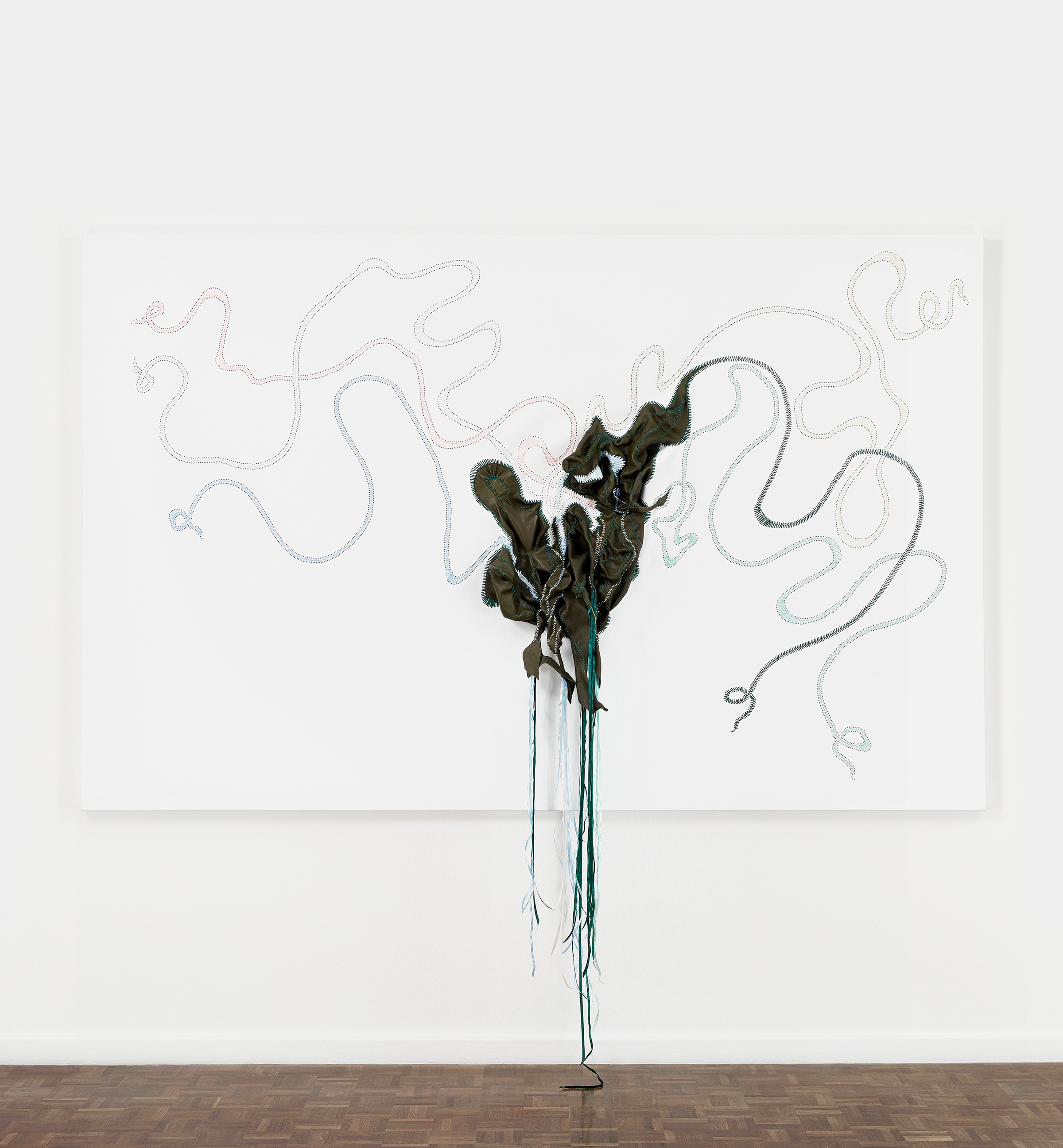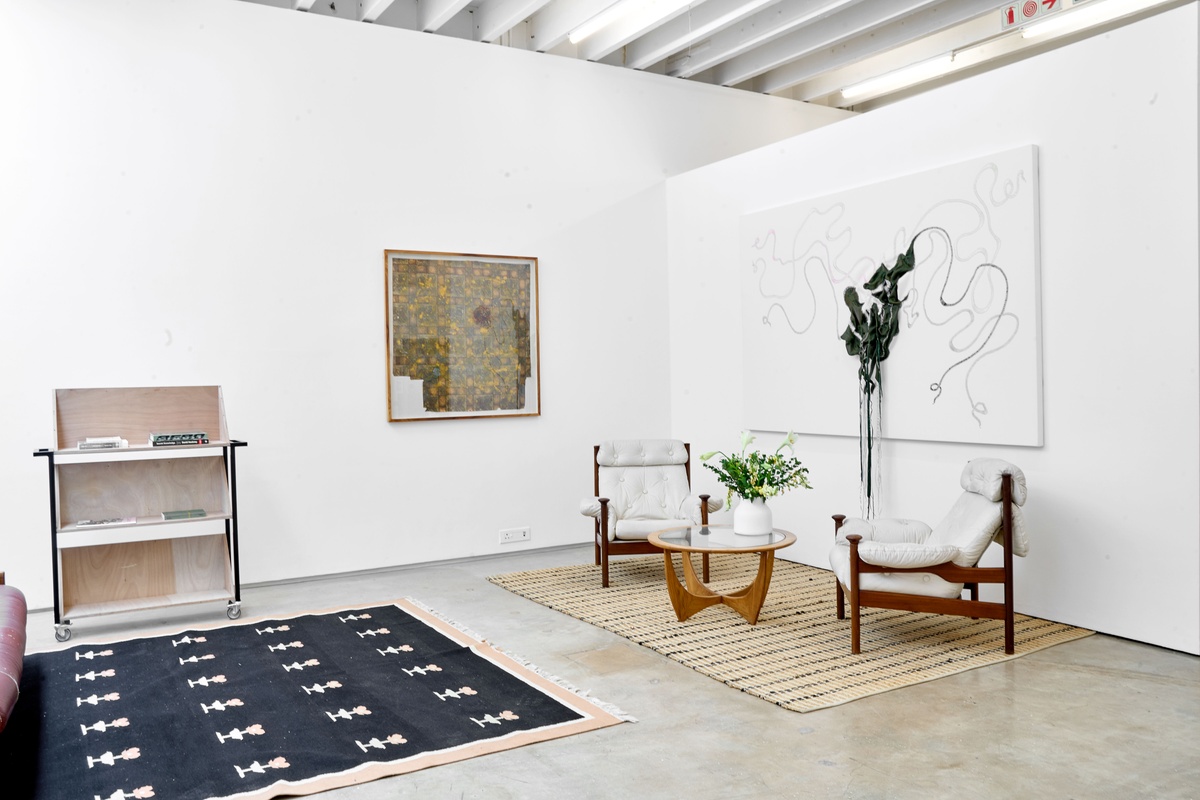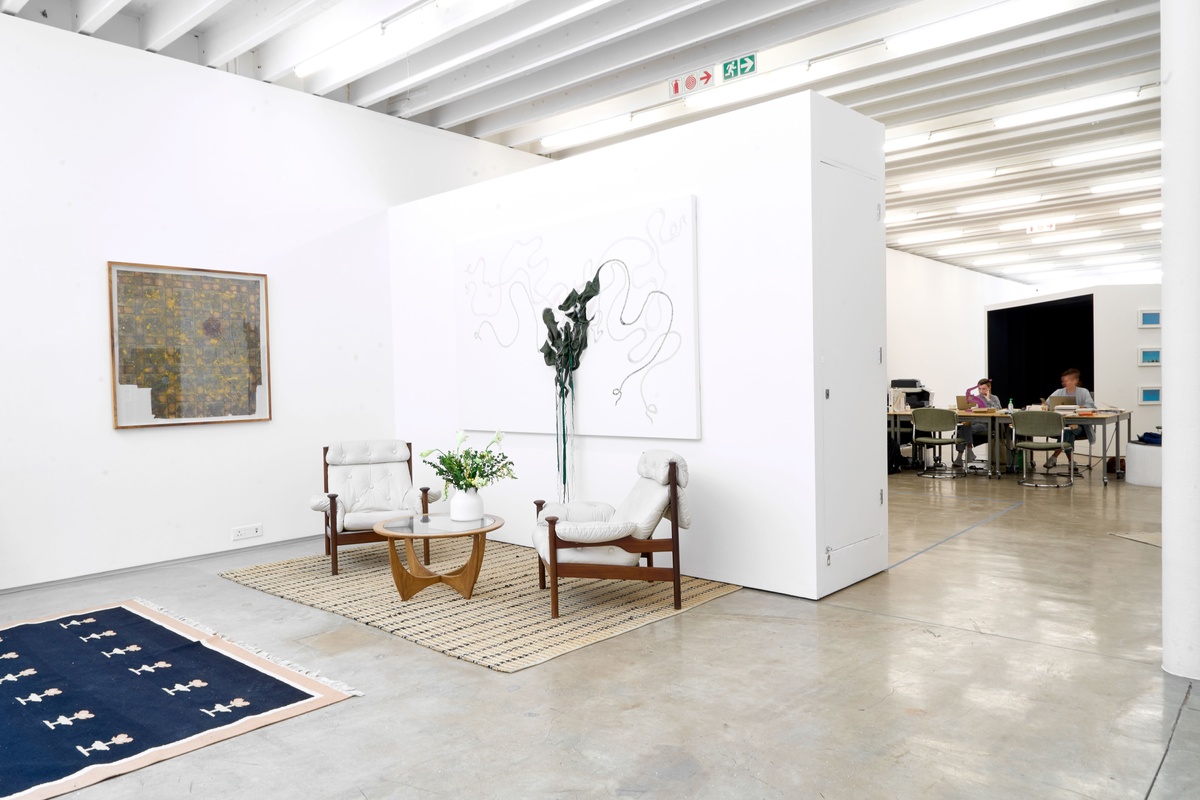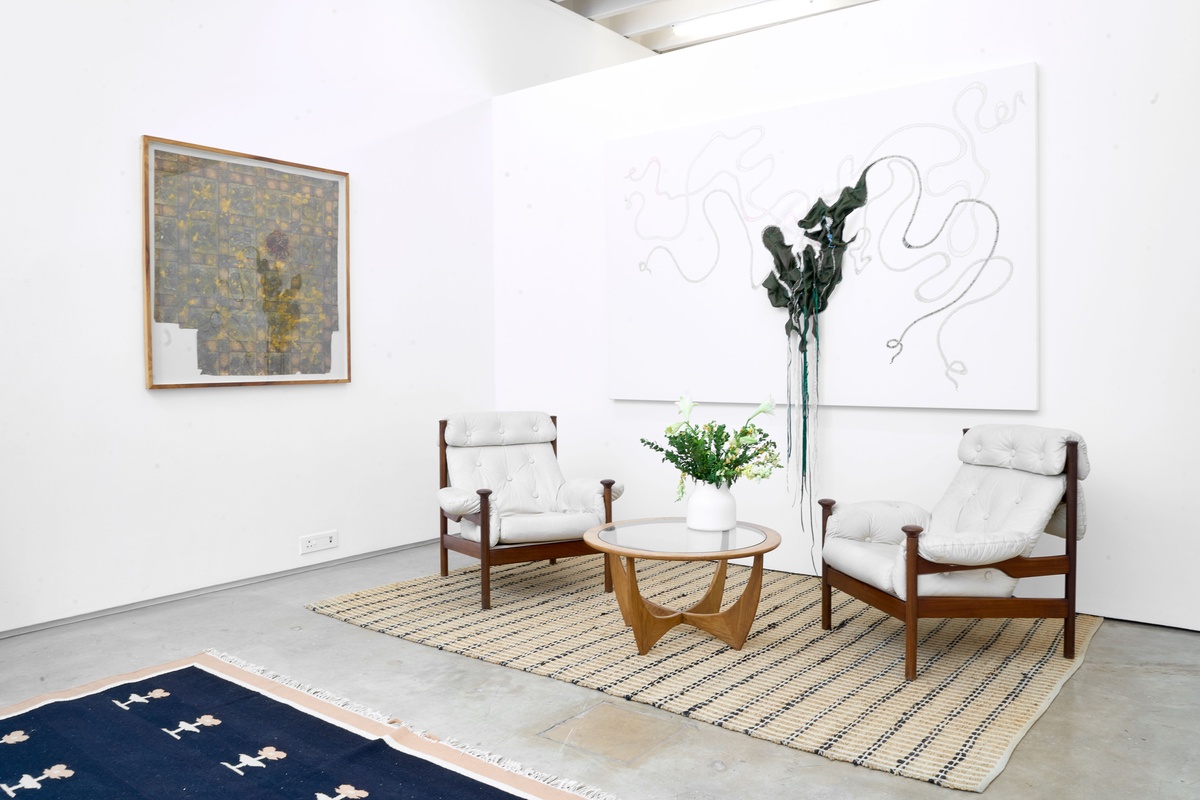Nicholas Hlobo

However spare Iqunjelwe might appear, however non-figurative its image, the composition and its title are evocative of intestinal churning. “There’s nothing descriptive here” – as writer Anna Stielau says of the artist’s other such ‘paintings’ – “nothing but an action embedded in material, yet the result is equally seductive and grotesque.” Comprising wandering lines stitched in satin ribbon that converge on an amorphous form made from salvaged inner tubing, the work has about it a sense of rupture, the canvas puckering where it was cut and later sutured. The effect is discomforting; the sense of abjection, of inside-made-outside, conveyed with compositional restraint. Even without intimations of blood or fleshy wound, the somatic suggestion, the organic spilling, gestures to the function (and more often dysfunction) of the body as apparatus. That the work’s title translates as ‘constipated’ extends further reflections to physical and psychic, even spiritual, frustrations – and perhaps those of South Africa’s body politic too. “Given the history of this country, the process of trying to rebuild a new culture gives the stitch a metaphorical quality,” Hlobo said in conversation with Sean O’Toole. “It’s almost as if we are stitching bits and pieces of history together to build something new.” Blockages remain; obstacles to be negotiated in the pursuit of long-deferred ambitions.
b.1975, Cape Town
Nicholas Hlobo is an artist of rare dexterity. In turn monumental and intimate, heavy and weightless, his works evade the themes ascribed to them, resisting facile explanation. Their titles, most often written in isiXhosa, only augment their uncertainty. Some read as unclear warnings – Zophalala futhi (They will fall apart again), Unojubalala (She is pale) – others incline towards the metaphysical; Izithunzi (The Shadows), Isisindo samadlozi (The weight of the ancestors), Uvuko (Resurrection). Hlobo moves fluently between performance, installation and painting (the imperfect word he uses for his hybrid works on canvas). In each, there is a tactile engagement with material – be it rubber, leather, copper wire or ribbon. For the artist, the materials are metaphorically charged and exist beyond their physical bounds. Assembled together, they become anthropomorphic abstractions; no longer threads and substrate but veins and skin. “In truth,” Hlobo says, “we’re all cords, plugs and connecting points; some split, some broken. Yet the body mends itself, the body continually grows. It’s a never-ending process, it’s a progression – and the mind does the same.”



